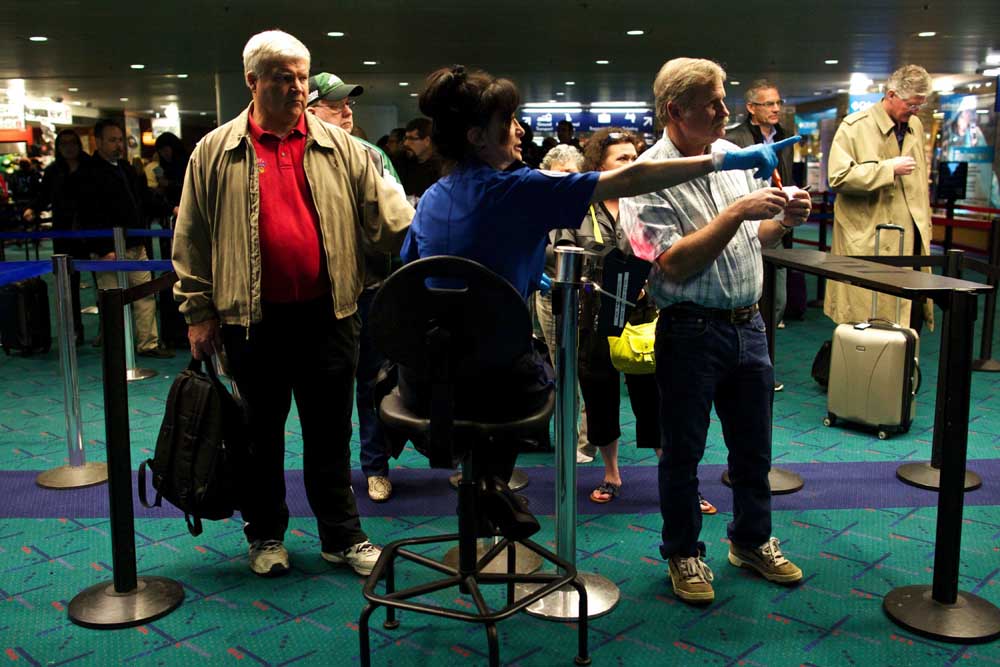Real ID is coming to Oregon, but are you ready?
Published 12:00 am Monday, October 21, 2019

- TSA agents are warning Oregon travelers that they will have to have a Real ID-compliant driver's license by October 2020 or they won't be able to fly.(PMG file photo)
If you’ve flown from Portland International Airport within the past couple of weeks, you’ve probably received a warning from Transportation Security Administration agents while waiting to get through security: Beginning Oct. 1, 2020, they’ll no longer accept state-issued identification that doesn’t comply with “Real ID” standards.
The changes have been in the making since Congress passed the Real ID Act of 2005. On the recommendation of the 9/11 Commission, federal lawmakers created standards for the issuance of sources of identification like driver’s licenses.
In 2009, the Oregon Legislature passed Senate Bill 536, which balked at the Real ID Act, calling it out as an unfunded mandate. Oregon lawmakers were unhappy the federal government didn’t outline how it would reimburse the state for updating driver information systems. Oregon lawmakers also felt a new system would provide few security protections, leaving identification systems open to insider fraud, counterfeit documentation and database failures.
The bill passed with little opposition, and the federal government pushed back the deadline as Oregon and nearly all other states refused to comply. During the next decade, the U.S. Department of Homeland Security began rolling out the law in phases, first at its own Washington, D.C., headquarters, then at nuclear facilities across the country. Air travel requirements were rolled out beginning Jan. 22, 2018.
Ahead of the deadline, most states began changing their systems, which included implementation of massive new data servers to keep identification information secure. The system was used to instantly verify documentation, such as birth certificates, passports, Social Security numbers and residential addresses.
Driver and Motor Vehicles Services spokesman David House said Real ID compliance continued to come up in Oregon’s legislative process each year. One obstacle to the state’s participation was technology. The Oregon Department of Transportation system was running on millions of lines of primitive code inside an old mainframe computer. House said it could have been updated to handle the new info required for Real ID compliance, but the half-century-old system “is simply incompatible with modern technology.”
In 2015, ODOT began updating its information system. Two years later, the Legislature approved a bill to authorize Real ID compliance. Instead of starting a new information technology project to become compliant, the state signed a $69.4 million contract with Colorado’s Fast Enterprises, which also handled system changes for Massachusetts and Minnesota, to tack on creation of a new driver information system to ODOT’s project already underway.
“I think what really pushed Oregon is watching other states successfully roll out their new systems for compliance,” House said.
Saving some money
According to House, Oregon and many other states likely saved money by delaying compliance with the Real ID Act of 2005 because when the first deadline rolled around in 2008, data storage systems were much more expensive. Legislative staff reports filed with SB 536 in 2009 show that Congress estimated it would cost states around $3.9 billion, or about $78 million per state in 2005 dollars.
Technology, particularly in the realm of security, has vastly improved during the past decade, according to House. There are still no hard numbers on how much Oregon and others might have saved by the delay, he said.
Only Oklahoma, New Jersey and Oregon have yet to comply with Real ID standards. While ODOT awaits arrival of its new data system in July 2020, the agency is using the interim to warn travelers not to wait if they plan to fly after Oct. 1, 2020.
Two weeks ago, ODOT and TSA officials spoke to reporters at Portland International Airport, where they encouraged frequent fliers to acquire passports so they’re not snagged in the anticipated long DMV lines, as people try to get new licenses to meet security requirements.






